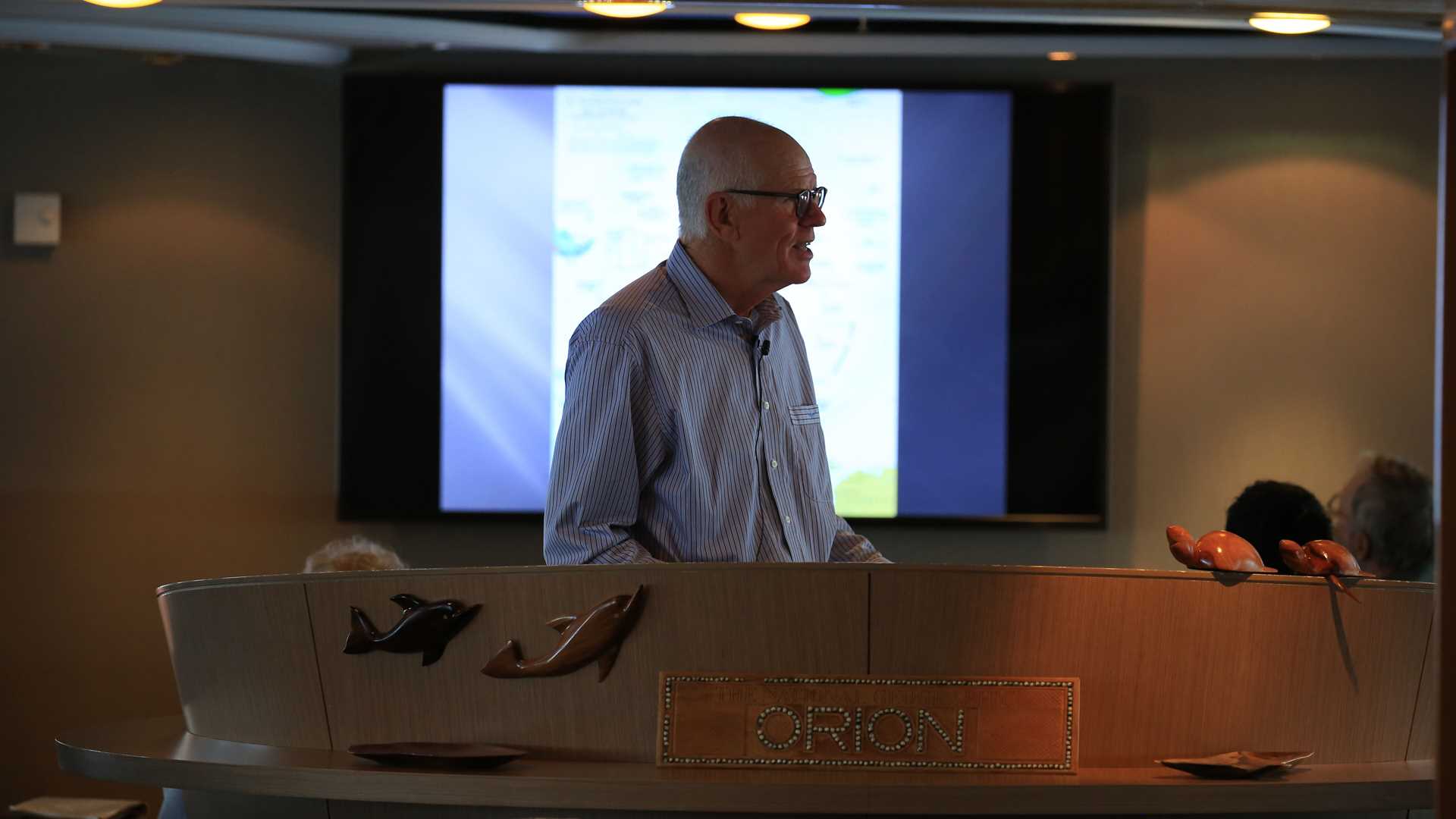After an incredibly full day at Macquarie Island, we were sad to leave. We spent a day at sea with a fairly gentle swell pushing us along to Campbell Island, our next destination.
We are becoming well-versed in this region, and we started the day with a biosecurity check to ensure that our clothing and equipment had not picked up any seeds, plant material, or organic matter. Everyone is obviously getting good at this, as there was very little to clean!
Afterwards, we enjoyed a great talk by Jayden who spoke about fisheries, associated environmental issues, and how we can make better choices about the fish we consume.
Lunchtime was incredible as usual. When five desserts are served, it seems only right that we sample each one. And after lunch – the gym!
We had time to enjoy walking on the deck as seabirds effortlessly cruised past. At 1600, teatime started. This was followed by another incredible talk from Peter Hillary about his father’s exploits in Antarctica and then his own personal experiences hauling a 200 kg sledge to the South Pole.







